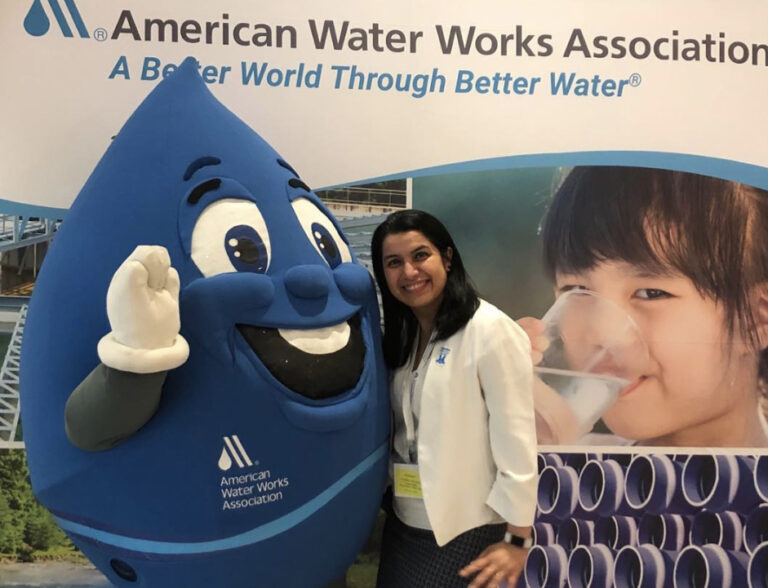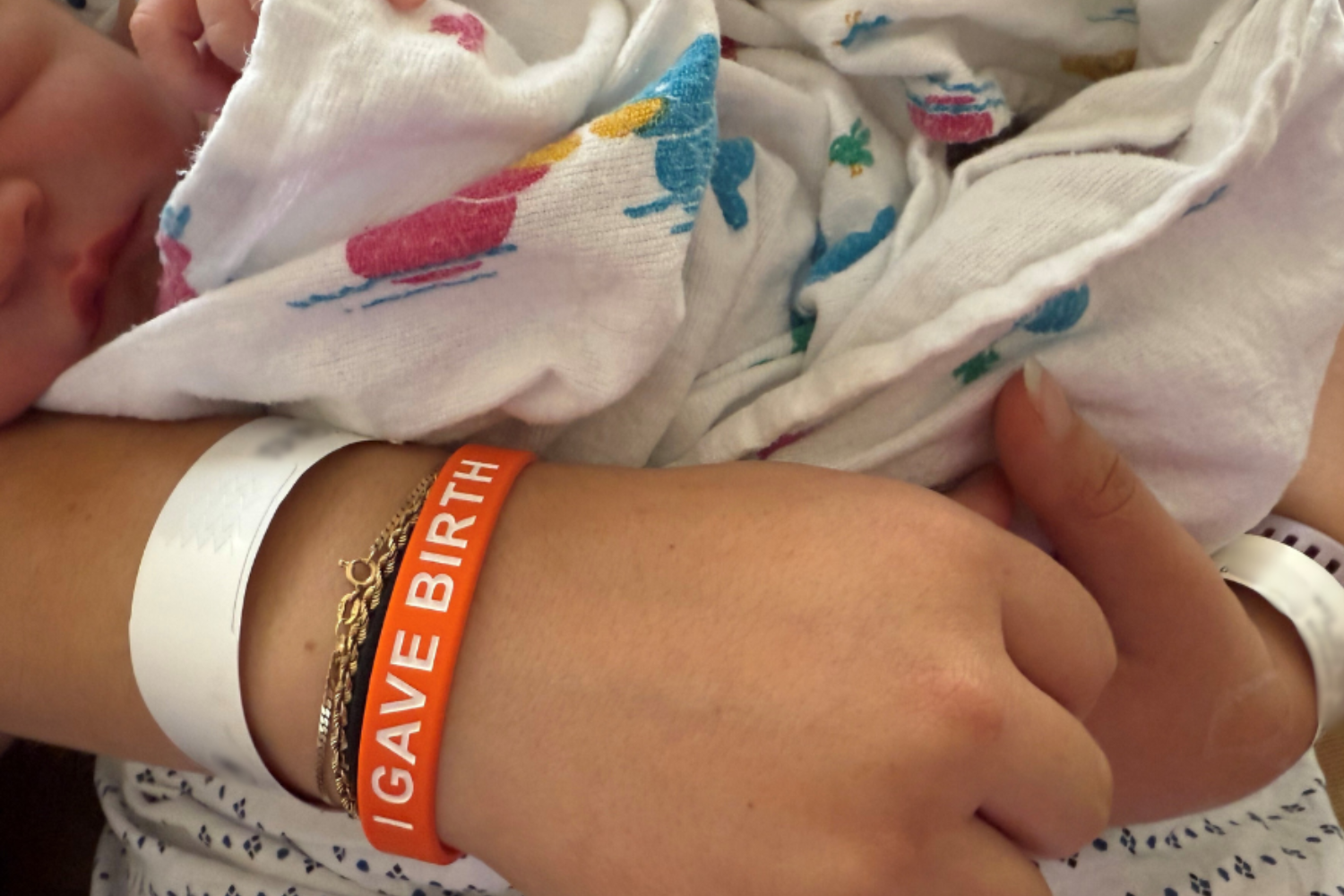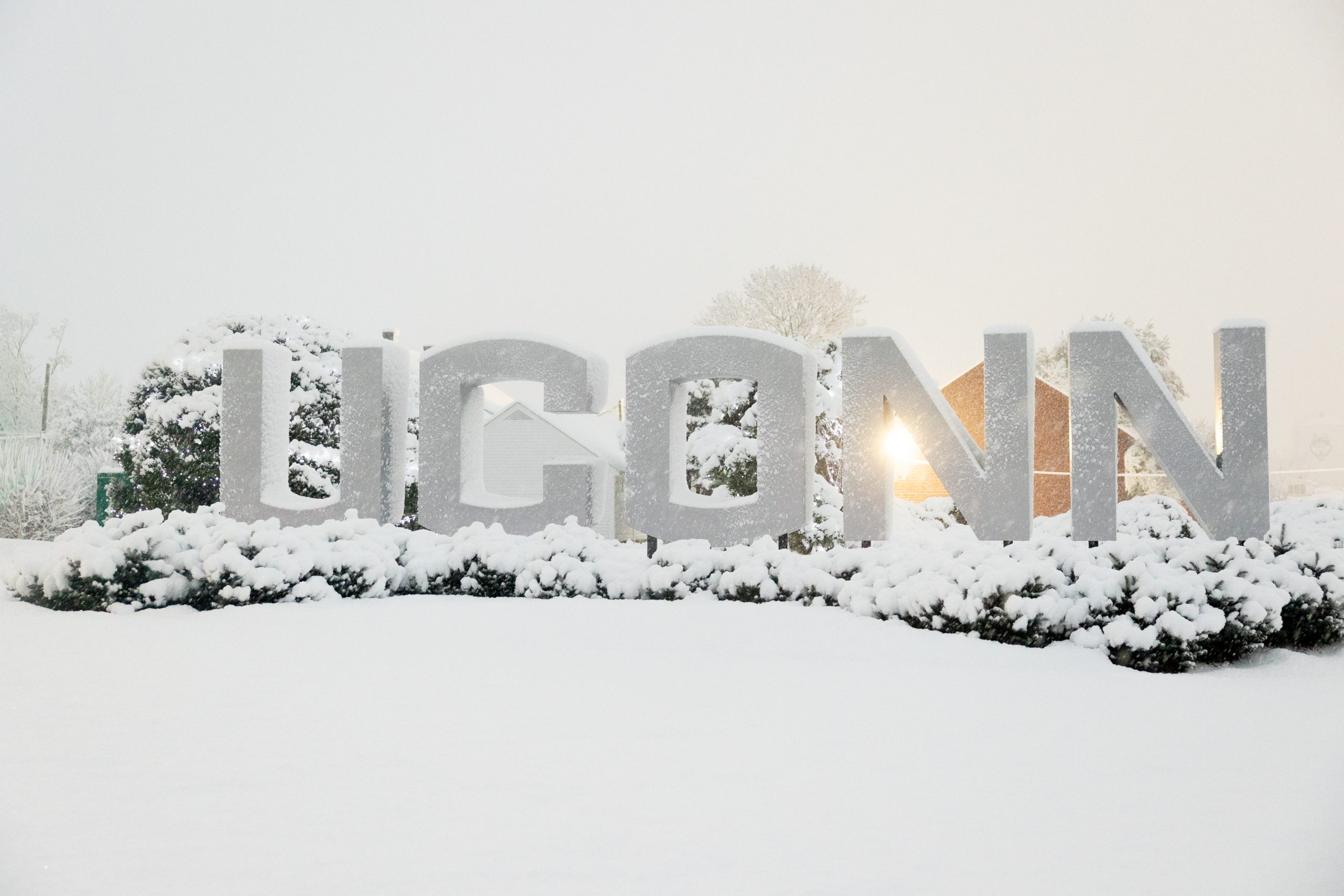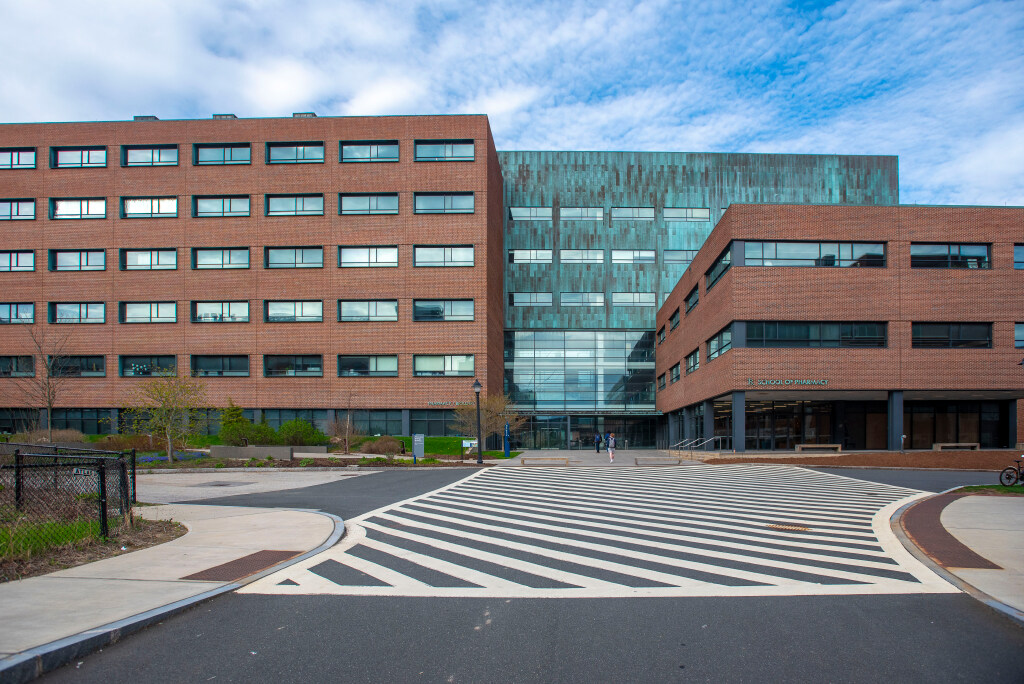By Rick Domas, UConn School of Engineering Research Development Proposal Team
“My name is Ada Liz Gabancho-Soto. I am from a small town called Uchiza located in the Peruvian Amazon. At night the sky is so clear. It almost feels as if you can reach out with your hands and touch each star.”
So begins the remarkable first-person story of Ada Liz Gabancho-Soto, a 2014 UConn School of Engineering graduate with a B.S.E. Environmental Engineering degree, as presented in the summer 2022 issue of InFlow-Line magazine published by The Connecticut Section American Water Works Association (CTAWWA) and The Connecticut Water Works Association (CWWA).
Even at an early age Ada is enthralled with the environment around her. “The sounds of many different kinds of animals can be heard throughout the day and night. As a child, I remember playing in the orange groves at my parents’ farm. I can still smell the fresh oranges, and I remember the times when my sister and I were playing and jumping into massive piles of oranges. It was there that I planted my first tree: a Caoba tree. I felt very accomplished in my contribution to my environment.” A Caoba tree is the most commercially important mahogany tree and one of only three species that produces true mahogany.
But not all is as idyllic and peaceful in Peru as Ada’s orange groves. In the 1980s and early 1990s, the brutal Shining Path terrorist organization, masterminded by Abimael Guzmán, a onetime philosophy professor and longtime Communist Party member, nearly toppled the government of Peru. By 1990, the Shining Path controlled a substantial part of the Peruvian highlands and countryside, and nearly three-quarters of the country was under a state of emergency or virtual martial law. Guzmán was captured in September 1992 in an operation later found to have been supported by the CIA, and the Shining Path movement soon fell apart without him.
A truth and reconciliation commission in 2003 determined that almost 70,000 people had been killed in the 1980s and 1990s — about half by the Shining Path and half by government security forces.
Ada remembers this period well: “When violence invaded my town, my good memories start to disappear. I remember as a child waking up very early because I heard an explosive noise like fireworks. It was gunfire! I huddled under the bed with my sister and my mother. I was so scared. After the gunfire, we went outside, and I will never forget the sight of the dead bodies littered on the ground and holes in the walls from the bullets. Even the town’s church had a hole in the walls. I was in shock looking at the church that was destroyed and all the dead bodies. Uchiza had changed, and it was now too dangerous to stay.”
Ada and her family move to Lima, the cosmopolitan and rapidly-growing capitol of Peru, and very soon she becomes aware of a different environment — one of overcrowding, unsanitary conditions, lack of potable water and other basic services. Ada recalls observing “how the people were living with a lack of basic water services, bad water quality, and bad treatment of residual water. I saw the reality of how people suffered. The poor had to pay more money for their water. They had to pay for the transportation to distribute the water to their houses which were far from everything. Trucks would be used to transport water.” Still, many lacked any form of water delivery, and collected and transported water in containers for later use. Unsanitary conditions led to frequent outbreaks of waterborne diseases, a huge health problem for these impoverished communities. “As a witness to all the problems with drinking water in Peru, I told myself that I would help to solve these problems.”
After emigrating to the U.S. and Connecticut with her sister, Ada enrolled in the UConn School of Engineering, with interests in environmental engineering and water quality and supply in particular. Today, she is employed by the Connecticut Water Company as a Service Delivery Performance Systems Administrator, where her varied duties range from maintaining/expanding the company’s data storage and information systems, developing SQL reports on various topics, responding to data requests from internal departments, and serving as a specialist on the water information data management system.

She is also very active in various professional organizations, and presently serves as chair of the CTAWWA Philanthropic Committee, which, under Ada’s guidance, is strongly supportive of two charitable organizations: Water for People and the American Water Works Association Water Equation Foundation. Not surprising, both organizations support grassroots efforts to secure access to clean drinking water. Water for People is a global nonprofit working to address the global water crisis and equip communities with lasting access to clean water and sanitation services. The nonprofit Water Equation Foundation provides funding for workforce advancement, academic scholarships, student and young professional programs, and the Community Engineering Corps.
Ada’s most positive experiences at UConn? “The amount of knowledge and expertise that all the professors shared with me and the positive learning environment.” She mentions her difficulties with English as a second language, noting that “homework that took most of my classmates one hour to do took me sometimes two hours to complete.” Ada made extensive use of the tutorial hours offered by her professors, and cites all, particularly Dr. Alexander Agrios, P.E., Associate Professor and Al Geib Professor of Environmental Engineering Research and Education, as being helpful and supportive. Her most negative experience? Two final exams on one day, something that all past and present UConn students can relate to!
Ada maintains close contact with her family, and though widely dispersed, sees her parents and one or more of her seven siblings as least once a year. And she has “see the world” options to do so: her parents and one brother remain in Peru, another sibling resides in Argentina, four siblings live in France, and a sister, an industrial engineer, remains nearby in Connecticut. “I’m fairly fluent in French given trips to France to visit my siblings there,” she notes.
Through her family and a small Peruvian community in Connecticut, Ada remains in touch with her heritage and culture. A favorite activity is attending the festivities around Las Fiestas Patrias, the two-day celebration that commemorates the liberation of Peru from Spain (July 28) and the establishment of the Republic of Peru (July 29). Ada travels to Norwich, Connecticut for these celebrations.
From her youthful experiences in Peru to a practicing water professional in Connecticut, Ada continues to value what many take for granted: clean and available drinking water. Wise beyond her years, Ada has some parting words: “We must consider where our water comes from and value our water. One day all the people around the world should have drinking water available. Please do not waste it when it is not necessary. We must take care of our water.”
This article adapted from the original in InFlow-Line Magazine, Volume 17, Number 2, Summer 2022. © 2022 CTAWWA and CWWA. All rights reserved. Used by permission of Ada Liz Gabancho-Soto, The Connecticut Section American Water Works Association and The Connecticut Water Works Association.



